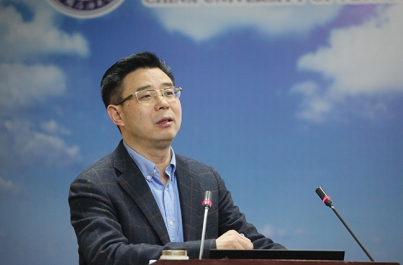PetroChina Sets Sights on Upstream
Gas production in China will boom, according to PetroChina's vice-president Zou Caineng, speaking at a panel session on the energy transition at the Gastech conference in Barcelona September 17. This boost would be in response to China's need for more gas, which accounted for 55% of China's energy imports last year, he said. "A lot of companies in China are working with us on this," he said.
He said overall Chinese gas production would reach 520bn m³/yr by 2030 and shale gas would play a very important role by 2050 as the country aspired to follow the US model. It also has a longer history of shale gas production than the US, he said. "Shale gas production is a strategic goal," he said. Imports of pipeline gas and LNG would also continue. According to BP, China's gas production has more than doubled in 11 years, from 69.8bn m³ in 2007 to 149.2bn m³ last year.
Many forecasts, including the central scenarios from the International Energy Agency, have gravely underestimated the global growth of renewables: the IEA explains this in terms of radical changes of policy or of governments that could not be predicted at the time of the forecasts. Most of the inaccuracies stem from sudden surges in solar and wind in India and China, which have both taken on coal or invested in renewables faster than the IEA could justifiably assert, the agency's chief economist Laszlo Varro told NGW at the conference.
Russia and China
The CEO of Russian piped gas export monopoly Gazprom Export, Elena Burmistrova, talked about Gazprom's focus on the Chinese market and the likelihood of a follow-up line to the Power of Siberia line using a different route. At the Vladivostok economic forum in Russia's far east earlier this month, she said that both Cnooc and Sinopec were discussing new imports and pipeline projects, including the western route, under pressure from the president Xi Jinping.
She lamented the politicisation of a "clearly commercial" pipeline project, funded without taxpayer's help: Nord Stream 2, the subsea gas pipe venture from Russia to Germany. Power of Siberia is "fully on time" for first gas in late 2019, she added, and Gazprom was glad to have a "new partner to discuss new projects with and new fields; but this would not affect the European Union which would always be a natural partner for Gazprom.
Shell's head of integrated gas and new energies Maarten Wetselaar also agreed with her that Gazprom's pivot to the east would not be to the detriment of the EU and was not a response to the opposition to Nord Stream 2 pipeline project: eastern Siberian fields will go to the east, western Siberian gas will go to Europe, he said. "I think the abundant amount of gas from central Asia, Russia and LNG will give China the confidence to push coal out: suppliers were not competing with each other for market share."
Technology to the fore
But it was not all good news for gas in China: "I believe technology will help us to find another source of energy: renewable energy. There are a lot of opportunities to challenge conventional energy. At the right price, technology will help the energy industry," said PetroChina's Zou.
Other panellists backed this up: Burmistrova said that hydrogen technology was becoming very efficient, and so was biomethane: grids were working with these technologies; and Shell's Wetselaar said gas would become much cheaper for its customers, thanks to digitalisation and carbon capture and storage – "although we are not there yet on costs."
ExxonMobil's Gas & Power head Peter Clarke said technology would remain at the bedrock of its business, from the giant liquefaction trains and tankers shipping its LNG out of Qatar, to algae and flue-gas technology. "Do not think about improving existing technology but about step-outs [into new areas altogether]," he advised the audience, while reminding them that gas demand was growing faster than energy demand growth.

PetroChina vice-president Zou Caineng (Photo credit: China University of Petroleum's School of Geosciences)



